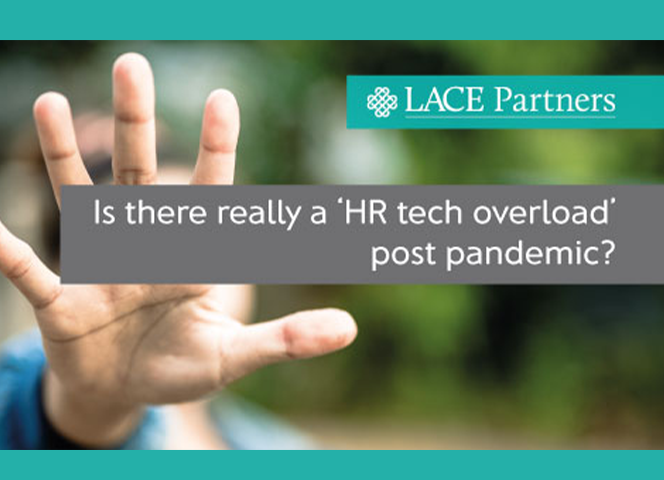2021 has seen a year of change for many businesses. Organisations needed to quickly adapt, and for most, that adaptation came in the form of rapid deployment of digital tools. But as we begin the countdown towards the Q4 calendar year, there has been talk of ‘tech overload’ across the trade and national media. Is this really the case? Are HR teams and employees starting to feel the stress of ‘too many systems’?
Don’t deploy in isolation
During lockdown the temptation for many businesses was to meet the need for digital tools for its employees by bringing in the latest shiny tool that they could find. Organisations wanted to expediate the digitisation of their People engagement, as well as emphasising self-service to give remote workers easier access to information. In principle, this was good for employees, employers and specifically the People function.
The challenge for many businesses we have spoken to over the last 18 months is: how do we knit all of these different tools together with a simple, easy-to-use, approach? And how can you avoid change fatigue and frustration for employees?
If you deploy a piece of HR tech in isolation this will always be a challenge. If you don’t think through your end-to-end architecture and implement as an integrated solution, what your employees will find is a fragmented experience. The ‘look and feel’ might be different across tools and detract from their overall digital employee experience, which inevitably leads to your people telling you that they have too many systems to use.
Get your integration right
This is a fundamental requirement of any successful digital transformation programme where you have multiple systems that you are trying to deliver to a business. This is particularly important with a rapid deployment plan, as many businesses were aiming for in 2020 and at the beginning of 2021. If you get your integration plan right then the question isn’t “what are the optimum number of systems our people should have to use”, or “should we put a cap on the number of systems so that our employees don’t face overload?”, but rather “what experience would you like your employees to have”.
Consider the example of a banking application, perhaps one that you use for your own banking, where you have access to multiple additional services aside from transactions for your money. Many banking apps have insurance, or corporate perks-style benefits that sit within the system. Some of these might simply redirect you towards a re-branded site that is managed by an insurance company, but because the user has a seamless experience, it does not leave you frustrated because the effort and time required to get the information you need has been minimal. The architecture that underpins that may come from multiple sources and systems but from a user perspective it feels seamless; you don’t know that you are using multiple tools when in fact you are.
The work may have all been conducted using ‘single sign-on’, an important part of making an employee experience seamless. If an employee has to sign on multiple times to get access to information it elongates the process of getting to where they want to go and adds to frustration.
The data risks of poor integration
Of course, there are also compliance benefits to getting your integration right. When you have systems that aren’t integrated well you face issues of duplication of data because those systems don’t talk to each other. Having to enter the same data into multiple tools is what wears down employees and HR teams, rather than the fact there are too many systems in play.
Issues of data governance arise if multiple data sets don’t talk to one another. If you are using a multitude of systems to perform different HR tasks (performance management, onboarding, case management, etc.), have they all gone through the appropriate internal due diligence in terms of information security and due diligence processes? Is the information security (InfoSec) person aware that all of this data is hosted across the different platforms? Are they in the Cloud or ‘on premise’? Or a mixture of both? Which region is the data stored in (relevant when you have large multinational organisations who might operate shared services across different regions, for example) and are individuals working within the business aware of where their data is stored? The complexity of multiple systems adds additional layers of compliance for HR to be aware of, and so the risk of poorly delivered implementations can have wider reaching consequences than simply irritating employees.
Speaking the same language
Ultimately, it is not about the volume of tools you have, but what they do and how you ensure they all speak the same language. If you have six tools that are doing the same thing and giving you the same outputs then of course that will cause overload, in particular for managers managing staff across borders (e.g. if different countries are using different platforms to do the same HR task). Ultimately, think about the number of different work tools individuals use every day (Microsoft Outlook, Microsoft Teams, Zoom, CRM etc.). It boils down to EX, and if the user experience works and the tools are able to be integrated so that an individual just has a ‘one-stop-shop’ for their access you can avoid employee frustration. On the flipside, if you have a disjointed experience with repeated efforts, it might be time to evaluate your HR technology landscape.
That is where the planning, strategy and clear thought process at the earliest possible stage is key. Get your roadmap, purpose and vision mapped out and be clear on what you need all of the tools to do. We can help if you need external support, reach out today to see how we can help.
This post was written by LACE Partners. They are an exhibitor on the HRTech247 Consulting & Advisory Partners floor in the Partners Hall here.






